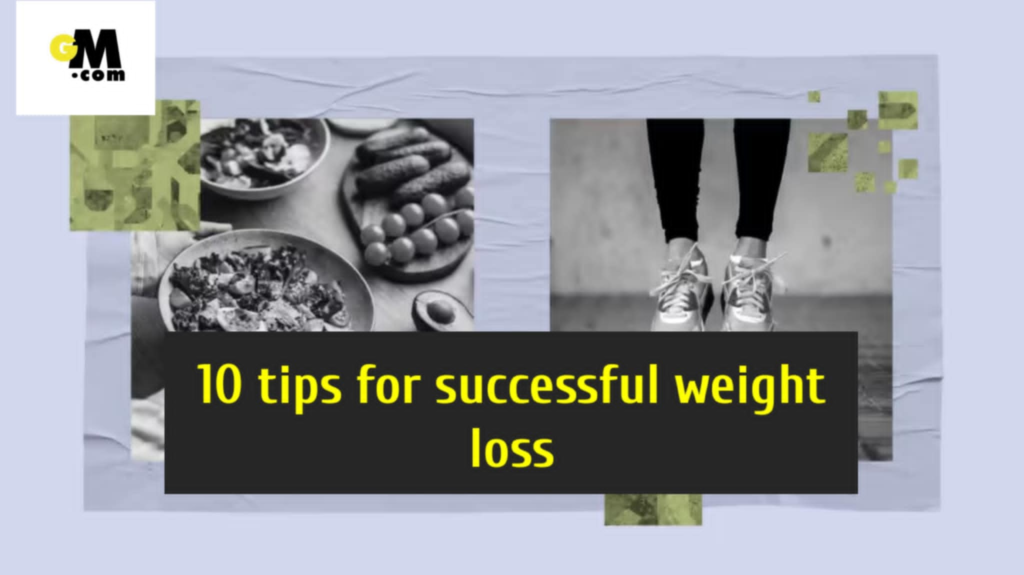
1 Eat varied, colorful, nutritionally dense foods
Healthful meals and snacks should form the foundation of the human diet. A simple way to create a meal plan is to ensure that each meal consists of fruit and vegetables, whole grains, and protein. Total fiber intake should be 25 to 30 grams (g) dailyTrusted Source.
A person should also aim to eliminate trans fats from the diet and minimize the intake of saturated fats, which has a strong linkTrusted Source to the incidence of coronary heart disease.
Instead, people can consume monounsaturated fatty acids or polyunsaturated fatty acids, which are types of unsaturated fat.
The following foods are healthful and rich in nutrients:
fresh fruits and vegetables
fish
legumes
nuts
seeds
whole grains, such as brown rice and oatmeal
Foods to limit eating include:
foods with added oils, butter, and sugar
fatty red or processed meats
baked goods
nutrient-poor processed foods such as chips or cookies
In some cases, removing certain foods from the diet might cause a person to become deficient in necessary vitamins and minerals. A registered dietitian nutritionist (RDN) can advise a person on how to get enough nutrients while following a weight loss program.
2 Keep a food and weight diary
Self-monitoring is a helpful toolTrusted Source in successfully losing weight. People can use a paper diary, mobile app, or dedicated website to record every food they consume daily. They can also measure their progress by recording their weight every week.
Those who can track their success in small increments and identify physical changes are likelier to stick to a weight loss regimen. However, it is important to pay attention to whether it starts to feel obsessive or damaging to mental health.
3 Engage in regular physical activity and exercise
Regular exercise is vital for both physical and mental health. Increasing the frequency of physical activity in a disciplined and purposeful way is often crucial for successful weight loss.
The American Heart Association (AHA) recommends 150 minutes weeklyTrusted Source of moderate-intensity daily activity, such as brisk walking.
People who are not usually physically active can gradually increase the amount of exercise they do and its intensity. This approach is the most sustainable way to ensure that regular exercise becomes a part of their lifestyle.
In the same way that recording meals can psychologically help with weight loss, people may also benefit from tracking their physical activity. Many free mobile apps can help people stay motivated, accountable, and confident as their fitness improves.
If the thought of a full workout seems intimidating to someone new to exercise, they can begin by doing the following activities to help increase their exercise levels:
taking the stairs
raking leaves
walking a dog
gardening
dancing
playing outdoor games
parking farther away from a building entrance
Individuals who have a low risk of coronary heart disease are unlikely to require medical assessment ahead of starting an exercise regimen.
However, prior medical evaluation may be advisable for some people, including those with diabetes. Anyone unsure about safe levels of exercise can speak with a healthcare professional.
4 Eliminate liquid calories
It is possibleTrusted Source to consume hundreds of calories daily by drinking sugar-sweetened soda, tea, juice, or alcohol. These are known as “empty calories” because they provide extra energy content without offering any nutritional benefits.
Unless a person consumes a smoothie to replace a meal, they can stick to water or unsweetened tea and coffee. Adding a fresh lemon or orange to the water can provide flavor.
Avoid mistaking dehydration for hunger. An individual can often satisfy feelings of hunger between scheduled meal times with a drink of water.
5 Measure servings and control portions
Too much of any food, especially those that are calorie-dense, can result in weight gain.
Estimating portions is a realistic and helpful tool for many people who do not have access to measuring tools or do not want to use them.
The following size comparisons can be useful for monitoring food intake when dining out:
a fist is equivalent to about 1 cup, measuring portions of vegetables and fruits
a tennis ball is equivalent to about ½ cup, measuring portions of grains such as rice or pasta
a deck of cards is equivalent to about 3 ounces, measuring a portion of fish, chicken, or other meats and meat substitutes
a thumb is equivalent to about 1 tablespoon, measuring a portion of any nut butter, olive oil, or salad dressing
These sizes are not exact, but they can help people moderate their food intake when the correct tools are unavailable.
6 Eat mindfully
Many people may benefitTrusted Source from mindful eating, which involves being fully aware of why, how, when, where, and what they eat.
People becoming more in tune with their bodies may lead to making healthier food choices.
People who practice mindful eating also try to eat more slowly and savor their food, concentrating on the taste. Making a meal last for 20 minutes allows the body to register all of the signals for satiety.
It is important to focus on being satisfied after a meal rather than full and to remember that many “all-natural” or low fat foods are not necessarily healthy choices.
7 Stimulus and cue control
Many social and environmental cues might encourageTrusted Source unnecessary eating. For example, some people are more likely to overeat while watching television, and others have difficulty passing a candy bowl to someone else without taking a piece.
By being aware of what may trigger the desire to snack on empty calories, people can think of ways to adjust their routine to limit these triggers.
8 Plan ahead
Stocking up with nutritious food for structured meal plans will result in more significant weight loss. Prepping ahead, such as washing and peeling fruits and veggies, can also help make healthier food choices.
Limit the amount of highly processed snack foods and desserts in the home, and make sure to keep ingredients on hand to make quick, nutritious meals. This can help minimize mindless eating and make it easier to make healthier food choices.
Planning food choices before social events or restaurants might also make the process easier.
9 Seek social support
Embracing the support of loved ones is an integral partTrusted Source of a successful weight loss journey.
Some people may wish to invite friends or family members to join them, while others might prefer to use social media to share their progress.
Other avenues of support may include:
a positive social network
group or individual counseling
exercise clubs or partners
employee-assistance programs at work
10 Stay positive
Weight loss is a gradual process, and people may feel discouraged if their weight does not reduce at the rate they had anticipated.
Sticking to a weight loss or maintenance program will be more challenging on some days than others. A successful weight-loss program requires perseverance and not giving up when self-change seems too difficult.
Some people might need to reset their goals by adjusting the total number of calories they aim to eat or changing their exercise patterns.
The important thing is to keep a positive outlook and be persistent in working toward overcoming the barriers to successful weight loss.
